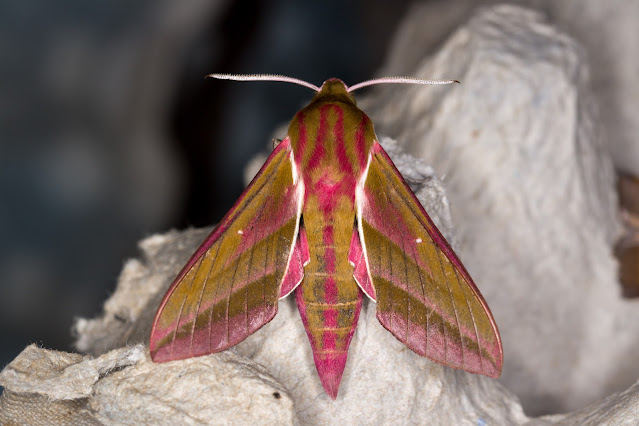My Blog List
Thursday, 30 June 2022
The elephant in the room
Thursday, 23 June 2022
Exciting news on RoeDeerCam
Roe deer are difficult subjects for the trail cameras so I don't often target them, although they do sometimes wander past when I am after other things. This time it was deliberate, and I ended up with some of the best footage I have had so far.
Roe deer fawns are born in mid May. For several weeks they are too small to follow their mother around so she leaves them in cover while she forages and returns several times a day to suckle them. Now a few weeks old, the fawns don't just lie up all day but wander around while they wait for mother to return, hopefully staying out of trouble. I'll show the recordings in the order they were made.
The first recording was of a single fawn. It was being pestered by mosquitos and was calling for its mother. Listen carefully and you can hear it squeaking.
Next up was a doe. Although it is June she is still moulting out of her dark winter coat into a foxy red summer coat.
Even though they are not yet weaned, the fawns are starting to feed for themselves. This short montage includes the first sign that there are twins.
And then this was what I had been planning, but it turned out even better than I had hoped.
This was the camera set-up, with the cameras low down at deer eye-level. I don't often use a tree but it was the only available support here. The lower camera has a close-focus +0.5 dioptre lens.
And finally a yearling buck (with uneven small horns) in the early morning light. The cameras are still in position in the hope of more exciting footage.
Sunday, 19 June 2022
Garden birds
Thursday, 16 June 2022
News from WaterShrewCam
The water shrew appears on the trail camera every day, often just a glimpse as it dashes to and fro.
This short clip shows how frenetic its life is.
The recent lack of rain means there is no water flow so there is a film on the water and the shrew ends up looking a bit scruffy. It has no difficulty in finding things to eat right at the water's edge. At the end of the next video the shrew has caught a spider and seems to be biting it without eating it - perhaps to disable it with a venomous bite to save it for later.
The last video shows a visit from a cousin - a common shrew (Sorex araneus). It has a good look round but, unlike the recent wood mouse, it does not appear to steal from the larder, perhaps because there was nothing left. The video gives the opportunity to compare the two shrews. The common shrew is smaller and slimmer with pointier nose and a proportionately shorter tail. In infrared light it just looks paler but in daylight it would have tri-colour brown/cream colouration compared with the water shrew's black and white. Notice a water scorpion (Nepa cinerea) in the water as the shrew passes. It was lucky this was a common shrew and not the water shrew.
Thursday, 9 June 2022
Woodpecker fledglings
This is something I look forward to at this time of year and a scene that has played out outside the kitchen window many times a day over the past two weeks. The fledgling woodpeckers are usually brought to the feeders by their parents around the end of the first week of June but this year they were early - the first I saw was on the 29th May. Since then it has been very busy with the adults squabbling over access, even though there are two peanut feeders. There are one or two woodpeckers, or sometimes four or five, every time I look out of the window.
The view has changed a lot since last year. Then the feeders were hanging from branches right outside the window but it meant the light was poor under the trees and the youngsters were often very difficult to see amongst the leaves. All the branches were lost in the great storm so now there is better light. The feeders are now very close to the nearest oak and the chicks like to perch on the bark, although often in a spot where I can't get a clear view.
Sometimes the feeding requires flexibility from both parties.
The variation in the extent of the fledglings' red caps is striking, and more than I have noticed before.
Even though they have broods of four to five chicks, each adult usually brings one chick at a time, but occasionally two. This male had a very efficient system worked out with the chick on the feeder, even though it wasn't able to feed itself.
While this was going on another youngster was waiting patiently only half a metre away.
Once the first was fed the parent immediately started feeding the second one.
And another half a metre away a third chick, presumably a bit older and from a different family, was on the other feeder, working out how to to feed itself. I think the youngsters are only fed by the parents for a a couple of days before they are independent.
The woodpeckers seem to be the only birds that consistently bring their young to the feeders to be fed. There are lots of other fledglings in the garden this week. I saw a family of young nuthatches but they were staying in cover while their parents went to fetch the food.























































